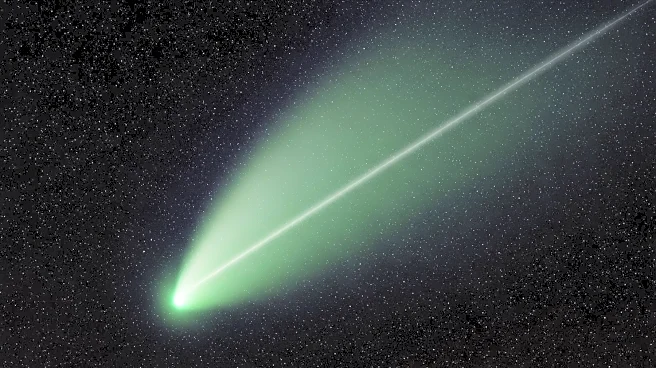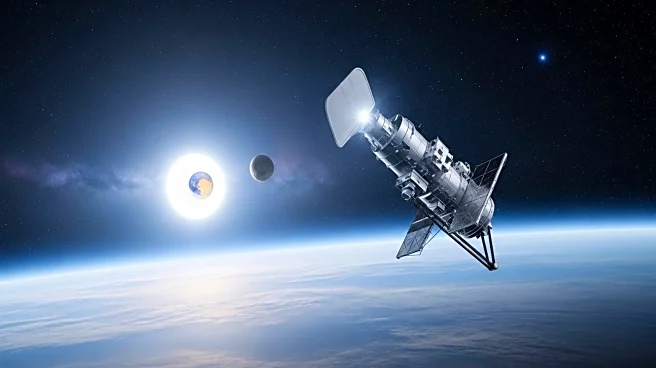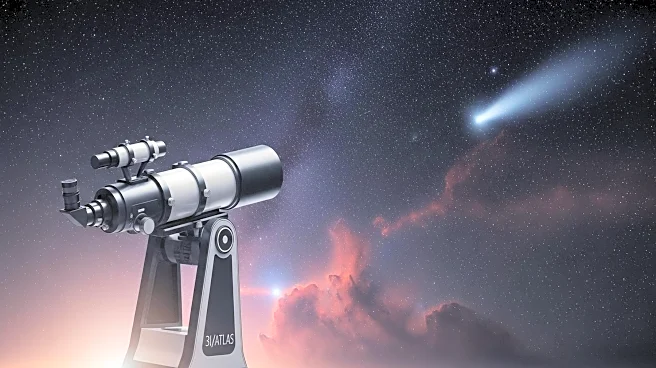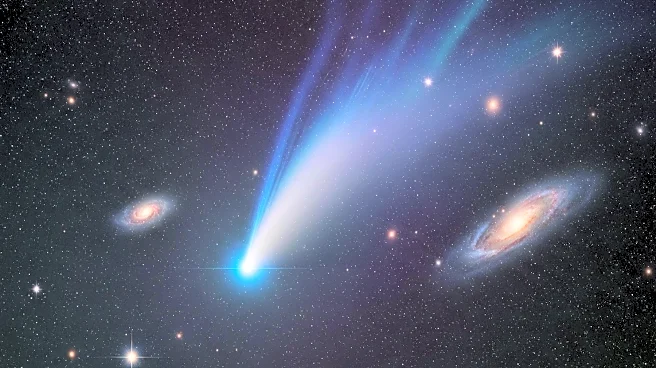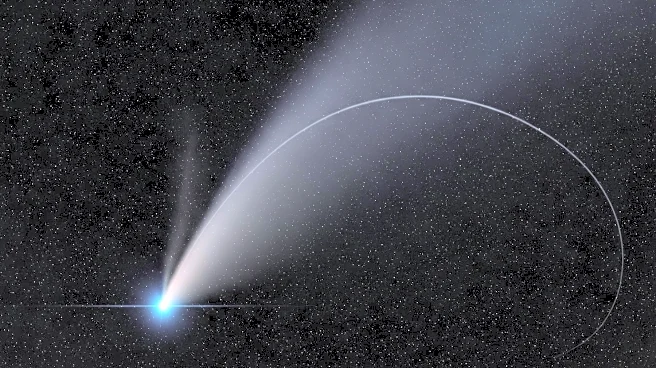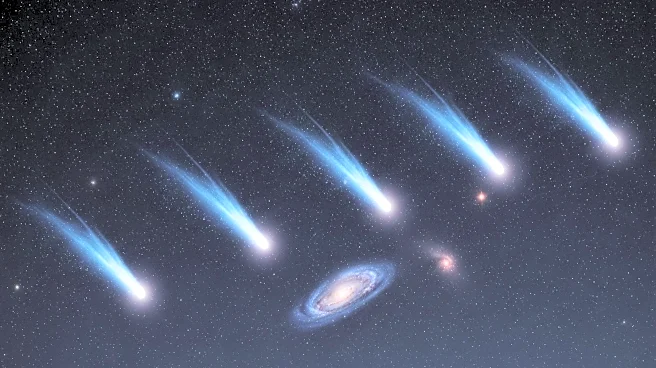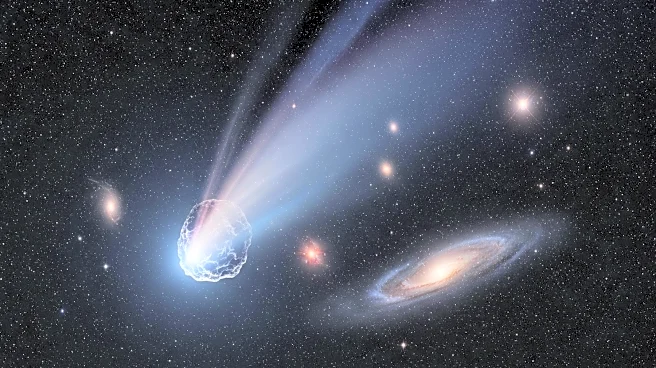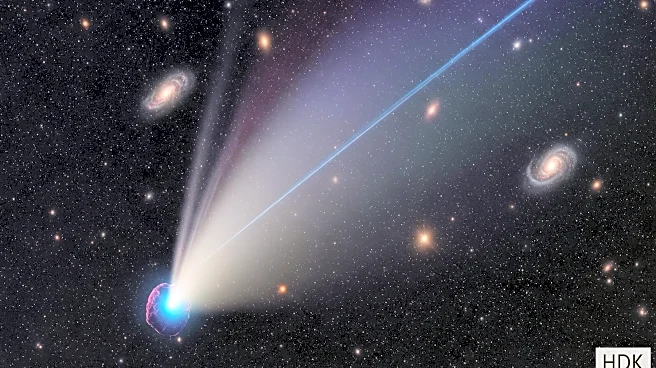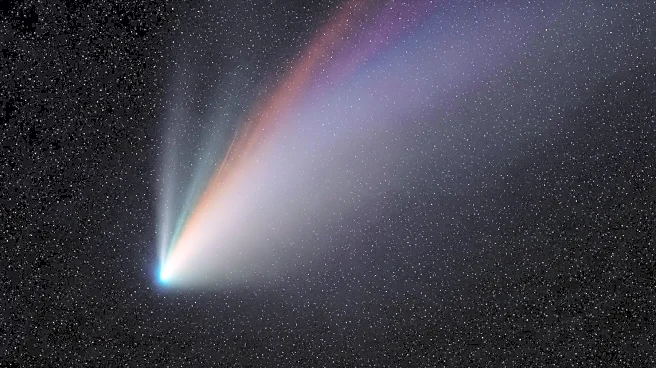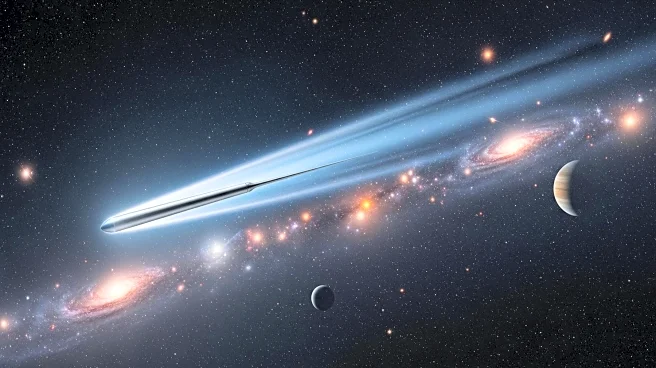What is the story about?
What's Happening?
NASA has announced the discovery of a new comet, C/2025 R2 (SWAN), which is notable for its green glow and long gas tail. The comet was first observed on September 11, 2025, using the SWAN instrument on the SOHO spacecraft. Initially difficult to spot due to the sun's glare, clearer images were captured as it neared the star Spica in the Virgo constellation. The comet's orbit takes over 22,500 years to complete around the sun, making its current visibility a rare event. It is expected to become brighter in October, offering a better viewing opportunity for skywatchers.
Why It's Important?
The appearance of C/2025 R2 (SWAN) presents a unique opportunity for astronomers and the public to observe a celestial event that occurs once every 22,000 years. The comet's green glow and long tail provide valuable data for scientists studying the composition and behavior of comets. This event also highlights the capabilities of modern space observation tools like the SOHO spacecraft, which play a crucial role in detecting and tracking such rare astronomical phenomena. The comet's visibility could inspire public interest in astronomy and encourage educational initiatives related to space science.
What's Next?
Skywatchers in the Northern Hemisphere are advised to use binoculars to view the comet, particularly around October 2, when it will be near the star Zubenelgenubi in the Libra constellation. The comet is expected to make its closest approach to Earth around October 20, coinciding with a fall meteor shower, potentially offering a spectacular celestial display. Scientists will continue to monitor the comet's trajectory and brightness, providing updates and viewing tips to the public. This event may also lead to further research into the origins and characteristics of long-period comets.
AI Generated Content
Do you find this article useful?
